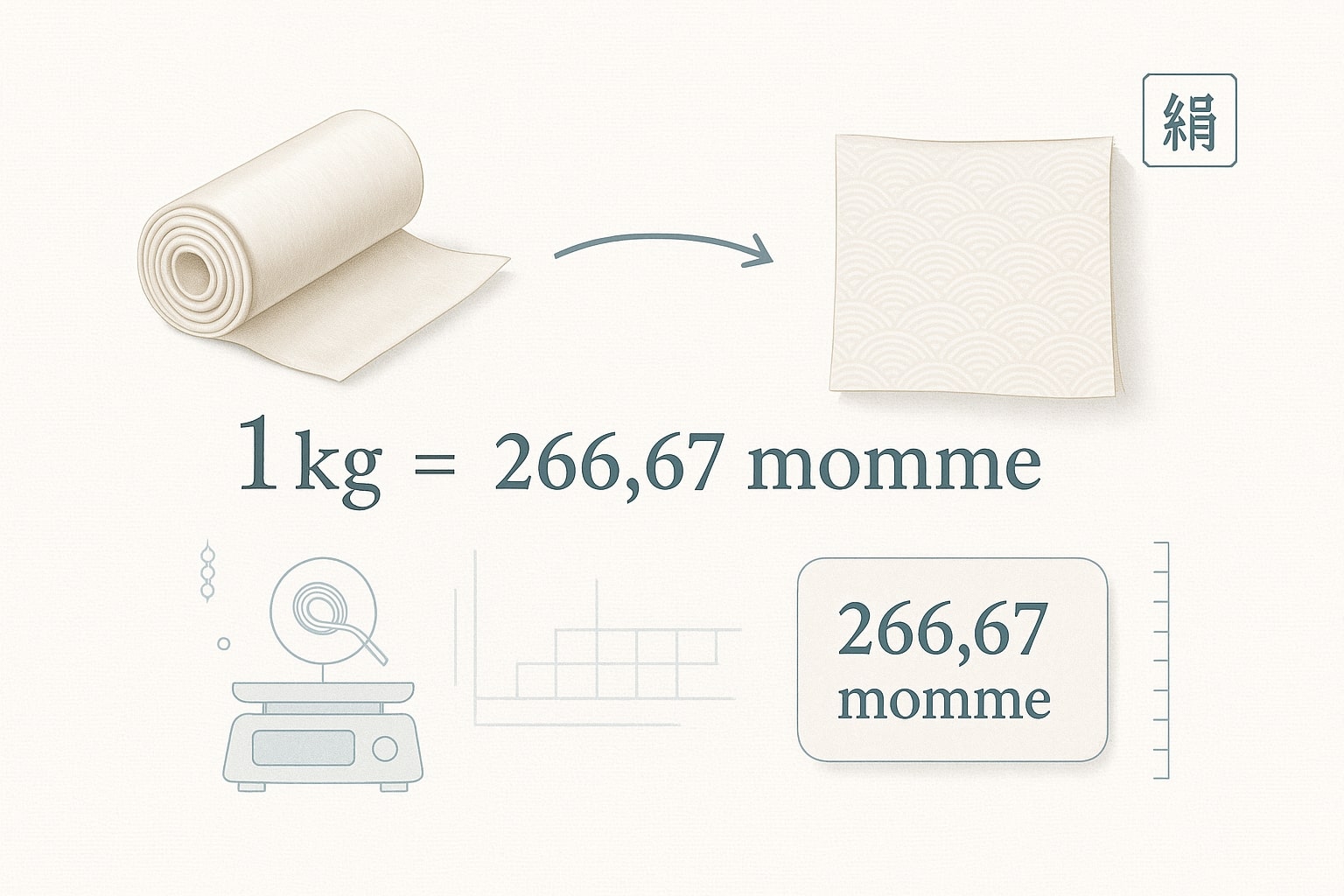kilogram to momme (kg to momme) – How to convert kg to momme
Need to convert kilogram to momme (kg to momme)? This conversion might sound niche, but it’s extremely valuable in textile industries, especially silk manufacturing, where momme is a standard unit of fabric weight. Whether you're sourcing fabric from Japan or researching traditional measurement units, our converter makes it easy to convert kg to momme in just a click.
Kilograms and Momme - Do you know?
-
The kilogram (kg) is the standard international unit for mass, adopted globally in science, trade, and daily use. Redefined in 2019 based on the Planck constant, 1 kilogram is equal to 1000 grams, making it the base unit for most metric weight conversions.
-
Momme (abbreviated as “mm” or “momme”) is a traditional Japanese unit of weight, originally used to measure small items like coins, pearls, and precious materials. Today, it’s most commonly known for its use in measuring silk fabrics.

Formula to convert kilograms to momme:
Momme = Kilograms × 266.66667
Example: if you want to convert 2 kg to momme, simply multiply:
2 × 266.66667 = 533.33334 momme
The higher the momme value, the heavier and more opaque the silk. For instance, 8 momme silk is lightweight and sheer, while 22 momme silk is luxurious and thick.
If you're working with smaller units, try our Gram to Momme Converter for finer precision.
Did You Know?
-
Kilogram: The kilogram was originally defined using a physical object—a platinum-iridium cylinder stored in France. Over time, scientists discovered that it was losing mass, which led to its redefinition using a fundamental constant of nature.
-
Momme: The term “momme” comes from Japanese currency systems dating back centuries. In the Edo period, coins and trade weights were calculated in momme. Its use in silk fabric measurement began in the Meiji era and remains the gold standard in Japanese textiles.
The Fabric of Royalty: Silk, Momme, and the Imperial Wardrobe
In 19th-century Japan, the Imperial Household Agency began officially regulating the production of silk garments for the emperor and royal family. Records show that the momme weight of silk was strictly measured to ensure both quality and social symbolism. Heavier momme values denoted more formal or ceremonial clothing. A 24-momme silk kimono, for example, would be reserved for high officials or members of the aristocracy.
This tradition continues today in Japanese bridal fashion and luxury kimono design. Leading kimono brands still use momme as the definitive measurement for pricing and categorization—proving that an ancient unit has not only survived but thrived in a modern economy.
Want to compare these legacy units with metric ones? Our Unit Converter Tool is here to help.

Conclusion
Whether you're in fashion design, textile manufacturing, or simply curious about international weight systems, knowing how to convert kg to momme is a useful skill. The kilogram to momme converter on Jetcalculator brings accuracy and clarity to a centuries-old measurement practice.
Ready to explore more tools? Try:
-
The universal Conversion Tool
-
Our full Weight Converter
-
Or dive deeper with the Gram to Momme Converter

